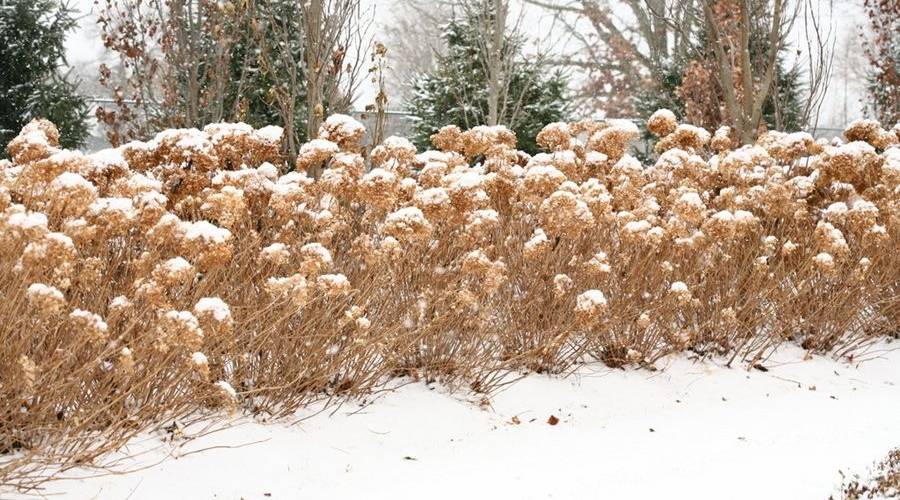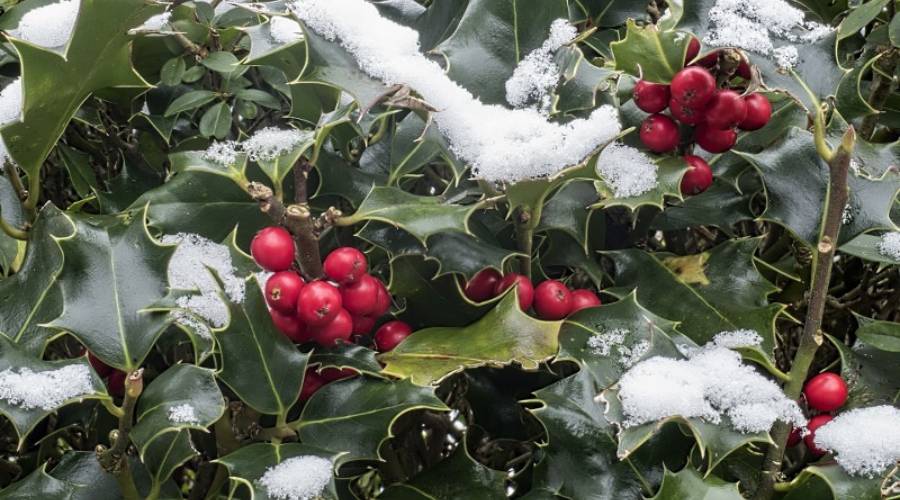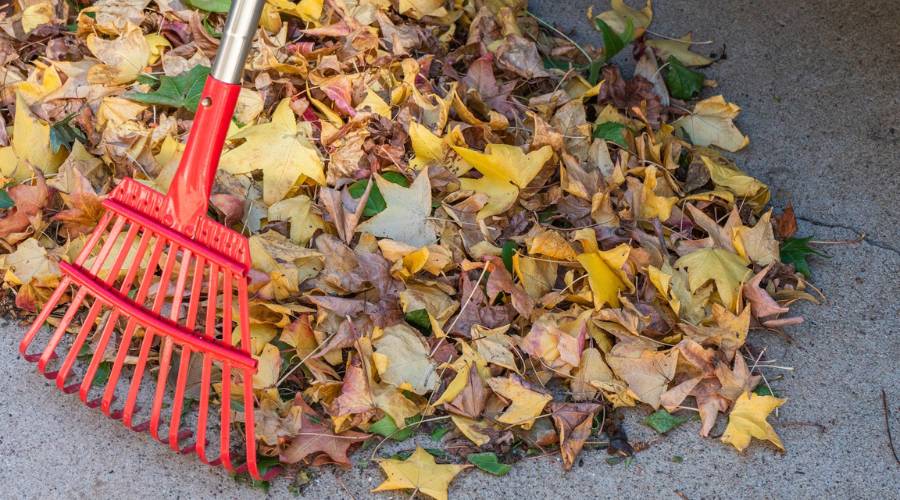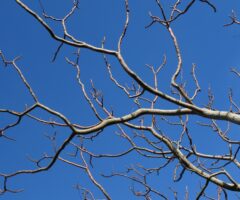Bundle up and get ready to transform your outdoor space into a winter wonderland! In the Great Lakes Bay Area of Michigan, where the snow falls and the temperatures drop, it’s time to explore the world of winter landscaping.
Don’t let the cold weather freeze your creativity – discover the best types of landscaping to do during the winter months. From protecting your plants to incorporating cold-weather elements, this article will guide you through the process of creating a stunning winter landscape.
Key Takeaways
- Use mulch to protect plants from extreme temperatures and retain moisture in the soil.
- Incorporate hardy evergreen plants and hardscaping elements for a winter-resistant landscape design.
- Choose cold-weather plants and decorative elements to enhance winter aesthetics.
- Clean up debris, prune, and prepare the soil for healthy growth in spring

Trimming back flowering shrubs in late winter is key for preparing them for new growth.
Protecting Your Plants from Harsh Winter Conditions
You should consider using mulch to protect your plants from the harsh winter conditions in the Great Lakes Bay Area of Michigan. Mulch acts as a protective layer, shielding your plants’ roots from extreme temperatures and preventing them from drying out. It also helps to retain moisture in the soil, which is crucial during the winter months when water is scarce.
When applying mulch, make sure to spread it around the base of your plants, covering the root zone entirely. This will provide insulation and prevent frost from penetrating the soil. Additionally, mulch acts as a barrier against weed growth, reducing competition for nutrients and sunlight.
Another important step in protecting your plants during winter is proper pruning. Trim any dead or damaged branches before the cold weather sets in. This will not only improve the appearance of your plants but also promote healthy growth in the spring.
Furthermore, consider using burlap or frost blankets to cover delicate plants, such as roses or delicate shrubs, during extreme cold spells. These protective coverings will shield your plants from freezing winds and harsh temperatures, ensuring their survival until spring arrives.
By taking these measures to protect your plants from the harsh winter conditions, you can ensure their health and beauty throughout the year in the Great Lakes Bay Area of Michigan.
Creating a Winter-Resistant Landscape Design
To create a winter-resistant landscape design in the Great Lakes Bay area of Michigan, consider incorporating hardy evergreen plants and mulching to protect against freezing temperatures.
Choose evergreen trees and shrubs that can withstand the cold and retain their foliage throughout the winter. Some excellent options include eastern white pine, Colorado blue spruce, and juniper. These plants will not only provide visual interest but also act as a natural barrier against harsh winds and snow.
In addition to evergreen plants, mulching is essential for protecting your landscape during the winter months. Apply a thick layer of organic mulch, such as wood chips or shredded leaves, around the base of your plants. This will help insulate the soil, retain moisture, and prevent freeze-thaw cycles that can damage the root systems. Mulching also acts as a protective layer against extreme temperature fluctuations, keeping the soil temperature more stable.
To further enhance your winter-resistant landscape design, consider adding hardscaping elements such as stone pathways, retaining walls, or decorative boulders. These features not only add visual interest but also provide structure and definition to your outdoor space during the colder months. Additionally, they can help prevent soil erosion and protect your plants from being covered in snow or ice.
By incorporating hardy evergreen plants, mulching, and hardscaping elements, you can create a beautiful and resilient landscape that will thrive throughout the winter in the Great Lakes Bay area of Michigan.

Incorporating some colorful winter plants can keep your yard full of life all winter long.
Incorporating Cold-Weather Plants and Decorative Elements
Incorporating cold-weather plants and decorative elements can enhance your winter-resistant landscape design in the Great Lakes Bay area of Michigan. When it comes to choosing plants, opt for those that can withstand the harsh winter conditions in this region. Evergreen trees and shrubs, such as junipers and spruces, are excellent choices as they retain their foliage all year round, providing color and texture to your landscape.
Additionally, consider adding holly bushes, which not only add a pop of color with their bright red berries but also attract birds during the winter months.
To further enhance the winter aesthetics of your landscape, incorporate decorative elements that can withstand the cold weather. Adorn your outdoor spaces with winter-friendly ornaments, such as colorful outdoor lights, wreaths, and garlands. These decorative elements not only add visual interest but also create a festive atmosphere during the holiday season.
Furthermore, don’t forget to include hardscape elements in your winter landscape design. Install stone pathways or patios that can withstand freezing temperatures and provide a solid foundation for walking or entertaining outdoors. Additionally, consider incorporating a fire pit or outdoor fireplace, which can serve as a focal point and provide warmth during chilly winter evenings.
By incorporating cold-weather plants and decorative elements, you can create a visually appealing and winter-resistant landscape design in the Great Lakes Bay area of Michigan. Enjoy the beauty of your outdoor spaces, even during the coldest months of the year.
Maintaining and Preparing Your Landscape for Spring
Maintaining and preparing your landscape for spring can help ensure that it thrives during the upcoming season. As the winter comes to an end, it’s important to take some steps to get your landscape ready for the warmer months ahead. Here are three things you can do to make sure your landscape is in top shape for spring:
- Clean up debris: Start by removing any dead leaves, branches, or other debris that may have accumulated over the winter. Clearing out this clutter not only improves the appearance of your landscape but also allows for better air circulation and reduces the risk of disease.
- Prune and trim: Take the time to prune and trim your trees, shrubs, and plants. This will help promote healthy growth and shape your landscape. Be sure to remove any damaged or dead branches and trim back overgrown areas to maintain a neat and tidy appearance.
- Prepare the soil: Before planting new flowers or vegetables, prepare the soil by loosening it with a garden fork or tiller. Add organic matter, such as compost or mulch, to improve soil fertility and drainage. This will create a healthy environment for your plants to grow and thrive.
By following these steps, you can ensure that your landscape is ready to burst into vibrant life when spring arrives in the Great Lakes Bay Area of Michigan.

Raking up debris before winter hits is necessary for getting your yard winter-ready.
Frequently Asked Questions
What are some common winter pests that can damage plants in the Great Lakes Bay Area of Michigan?
Common winter pests in the Great Lakes Bay Area of Michigan can damage plants. Take precautions against pests like deer, rabbits, and voles. Use fencing, repellents, and traps to protect your plants during the winter months.
Are there any specific types of mulch that are recommended for protecting plants during the winter in this region?
Yes, there are specific types of mulch that are recommended for protecting plants during winter in the Great Lakes Bay Area of Michigan. These include straw, wood chips, and shredded leaves.
How often should I water my plants during the winter months in the Great Lakes Bay Area?
During the winter months in the Great Lakes Bay Area, you should water your plants sparingly. Think of it like sipping hot cocoa on a snowy day – just enough to keep them hydrated without drowning them.
Are there any specific steps I should take to protect my outdoor furniture and other decorative elements during the winter?
To protect your outdoor furniture and decorative elements during winter in the Great Lakes Bay Area of Michigan, cover them with waterproof tarps or store them in a dry place to prevent damage from snow, moisture, and freezing temperatures.
What are some common signs of winter damage to look out for in plants, and how can I address them?
Are you worried about winter damage to your plants? Well, brace yourself for a frosty surprise! Look out for withered leaves, frostbite, and root rot. But fear not; just prune, protect, and water wisely to revive them!
Need Some Assistance Getting Your Yard Winter Ready?
Call Bay Landscaping today at 989-893-0000. Whether you need help with maintenance or want to add a few winter plants from our nursery, we’ve got the knowledge and experience to keep your yard looking amazing all winter long.
Proudly serving Michigan’s Great Lakes Bay area including Saginaw and Bay City!






